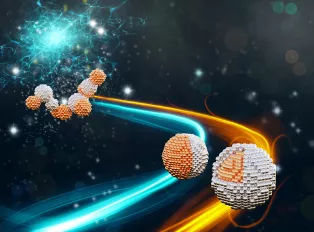Nanoparticle synthesis and assembly
Perfecting particles individually and collectively
Multifunctional nanoparticles are synthesized via aerosol and solution-based methods, with tuning of e.g., semiconducting, magnetic and catalytic properties. Self-assembly into 1D, 2D, 3D and superlattice structures are explored for utilizing collective phenomena.
Research areas:
Aerosol-based nanoparticle generation
Aerosol-based methods, such as spark ablation, enables generation of nanoparticles with high-purity and controllable size, morphology, crystal structure and chemical composition on a large scale, at low costs, and in a safe and environmentally friendly way. Spark ablation furthermore has superior capabilities concerning mixing different materials into single nanoparticles. We mainly focus on the design of magnetic and catalytic nanoparticle-based materials to understand how nanoparticle properties can be tuned to improve the magnetic and catalytic performance of such materials.
Contact persons:
Perovskite nanocrystal synthesis
We work on perfecting the synthesis of metal halide nanocrystals in perovskite and closely related structures. One focus is to produce wide-bandgap, lead-free, layered double perovskite nanocrystals for photocatalytic applications such as photoelectrochemical water splitting. Another focus is to produce self-assembled superstructures and use them as model systems in photophysics studies of collective light emission phenomena such as superfluorescence.
Contact persons:



